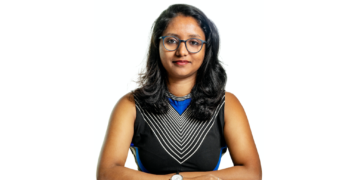Three lessons for brands during Ramadan 2022, by WARC’s Alex Brownsell
WARC’s latest media consumption forecasts demonstrate that consumer behaviour is shifting towards a new post-pandemic era
Three long years have passed since marketers were last able to focus their attention on Ramadan without having to consider the impact of COVID-19.
In 2020 and 2021, brands were forced to adjust their messaging to reflect consumers’ locked-down lives, with families often required to remain at home during the holy month to prevent the spread of the virus.
While the pandemic is by no means over – as highlighted by the arrival of the recent Omicron variant – this year’s Ramadan is likely to be the most ‘normal’ since those heady days of 2019.
For a start, we are seeing a rapid recovery in advertising investment across the globe.
In the Middle East (excl. Israel), WARC Data forecasts that total ad spend will increase 16.5% year-on-year, driven by strong demand for TV media and a growing appetite for online channels. While total investment will remain 8.7% short of pre-pandemic spend levels, the recovery continues apace – and brands can expect greater competition for attention during Ramadan.
New media consumption trends
Advertisers must also adjust to post-pandemic consumer behaviour trends.
The volume of media being consumed by Egyptians has declined from the COVID-19 ‘peak’, when people had little else to do but watch TV and scroll through social media feeds. Average daily media consumption in Egypt across all channels will reach 15 hours and 25 minutes in Q2 2022, according to WARC Data forecasts, down from 15 hours and 38 minutes a year previously.
While average daily social media usage has dipped slightly over that period (-1.2% YoY to two hours and 47 minutes), the biggest increase in consumption has been seen in podcast listening (+26% YoY to one hour and 32 minutes). Though linear TV consumption remains high, averaging one hour and 57 minutes per day, video on-demand and online video formats are catching up fast, with average daily consumption in Q2 2022 forecast to reach one hour and 47 minutes.
In light of these trends, we share three pieces of advice from recent articles published on WARC.
-
Ramadan shopping is moving online
The pivot from in-store retail spending to e-commerce pre-dates the pandemic and is likely to continue in spite of any steady return to normality.
Already in 2020, mobile shopping app downloads spiked at the start of Ramadan, tailing off towards the end of the month, according to TrafficGuide and SimilarWeb data. In Indonesia, inMobi research from 2021 found that 79% of consumers intended to buy only during Ramadan itself, up from 33% a year previously, demonstrating a shift towards more spontaneous purchase behaviour.
-
Be aware of changes to consumer mindsets
Marketers planning activity during Ramadan must be responsive to changes in audience mindset. Brands often make the mistake of creating a single message that they simply flip from subdued to celebratory between Ramadan and the Eid al-Fitr festive periods.
A recent survey by Facebook’s parent company Meta found that, during Ramadan, people are more likely prioritise the “importance of giving back”. While 88% of Egyptians surveyed by Meta are open to companies advertising to them on Facebook during the Ramadan/Eid al-Fitr season, they are most likely to respond to brands displaying “relevance” and “authenticity”.
-
It’s not just about marketing during Ramadan
This coming Ramadan is likely to see fiercer competition for consumer attention than we have witnessed for a couple of years. As such, rather than focusing all efforts on the holy month, when people are fasting and concentration levels are low, brands might be more effective with an always-on campaign to keep the brand front of mind.
Take telco brand Jawwy, which drove revenue growth and brand awareness with an unconventional Ramadan campaign in Saudi Arabia, and – in doing so – gained recognition in WARC’s 2021 Effective 100 Rankings.
Searches for the Arab word for charity spike during Ramadan, so the brand decided to focus on the other 11 months of the year. Teaser social ads were launched at the end of Ramadan asking people if they were prepared to maintain the Ramadan spirit of generosity throughout the entire year, followed up by longer video content, a website as well as ‘goodness’ initiatives and handouts.
The video generated 11 million views in one week and the campaign delivered 168% year-on-year growth, and increases of 60% in awareness and 5% in market penetration.
Alex Brownsell is Head of Content for WARC Media.












